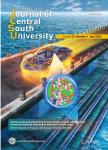版权所有:内蒙古大学图书馆 技术提供:维普资讯• 智图
内蒙古自治区呼和浩特市赛罕区大学西街235号 邮编: 010021

作者机构:School of Electronics Information EngineeringHarbin Institute of Technology Department of Automation Measurement and ControlHarbin Institute of Technology
出 版 物:《Journal of Central South University》 (中南大学学报(英文版))
年 卷 期:2012年第19卷第10期
页 面:2816-2822页
核心收录:
学科分类:080904[工学-电磁场与微波技术] 0810[工学-信息与通信工程] 0809[工学-电子科学与技术(可授工学、理学学位)] 08[工学] 080402[工学-测试计量技术及仪器] 0804[工学-仪器科学与技术] 081001[工学-通信与信息系统]
基 金:Project(61071104) supported by the National Natural Science Foundation of China
主 题:cognitive radio uplink power control interference iterative algorithm
摘 要:Based on the analysis of the feature of cognitive radio networks, a relevant interference model was built. Cognitive users should consider especially the problem of interference with licensed users and satisfy the signal-to-interference noise ratio (SINR) requirement at the same time. According to different power thresholds, an approach was given to solve the problem of coexistence between licensed user and cognitive user in cognitive system. Then, an uplink distributed power control algorithm based on traditional iterative model was proposed. Convergence analysis of the algorithm in case of feasible systems was provided. Simulations show that this method can provide substantial power savings as compared with the power balancing algorithm while reducing the achieved SINR only slightly, since 6% S1NR loss can bring 23% power gain. Through further simulations, it can be concluded that the proposed solution has better effect as the noise power or system load increases.